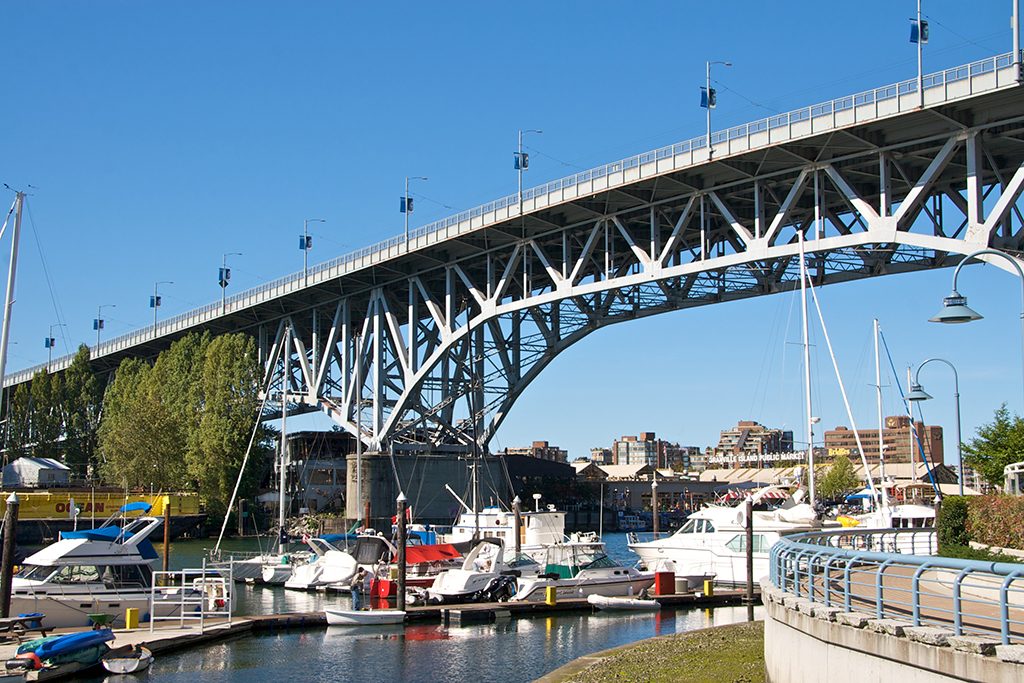VANCOUVER- The City of Vancouver is working to ensure one of the major routes into the downtown core is safe from seismic disturbances.
The Granville Bridge, originally built in 1954, is a seven-span, 537-meter-long steel deck truss bridge, and is supported on concrete piers with a concrete deck.
“With the bridge, the factors we’re specifically addressing are bearing replacements, damper work to isolate the steel slab and expansion joint work for the deck,” City of Vancouver manager of project delivery engineering services Sarah Wilson said.
Though cosmetically the bridge will not appear different, Wilson said there will be additions to the structure.
“We’re adding dampers near the bearings to make sure steel structure isolated, so if an earthquake happens dampers absorb energy from girders,” she said.
Upgrading the bridge and ensuring seismic stability means some disruption to regular traffic patterns, Wilson added, but steps are being taken to minimize the effects.
“On each pier, we go in underneath between the girder and the pier and jack it up, put blocking underneath and bring it back down with no traffic on the bridge,” she added.
Traffic is restricted for 15 minutes at a time, Wilson said, and work is done in the early morning prior to peak usage.
“We hope to limit the disruption the work causes to the public as much as possible, and we’re quite prescriptive on the number of lanes a contractor can work on at any given time,” she said.
Work is planned to begin at the end of the month and will continue until April or May 2021, Wilson said.
“The first thing will be work underneath the bridge, so there won’t be much visibility to the public until March of next year,” she said.
Wilson said the bridge must also go through an environmental assessment where potential mitigation factors “can go from anything from guano to lead paint.”
“There are cormorants nesting underneath the bridge, and we have to make sure they’re looked after while we work,” she added.
Prior to upgrade work, the city goes through an assessment process to determine which infrastructure is most in need of attention and if efficiencies can be found in addressing different structures at the same time.
“The city has a lot of bridges and a detailed bridge inspection program. We take an asset management approach to understand how the infrastructure is performing and then determine how to fix it,” City of Vancouver head of asset management and structures Dane Doleman said.
“The city hires a consultant for a detailed inspection program and does a visual inspection to identify defects, then ranks those defects,” he said
“Do those defects have impact on what the bridge is supposed to do? If it’s a visual defect that’s one thing, but if it raises longevity issues that’s another,” Doleman added. “We want to make sure the bridge has capacity to support traffic, but if we fix it now it prevents accelerated deterioration later.
Doleman compared seismic bridge upgrades to the province of B.C.’s approach to retrofitting schools to protect them from earthquakes.
“You need funding to support these things, and you don’t know how much you need until you go to the next level of detail,” he said.











Recent Comments
comments for this post are closed